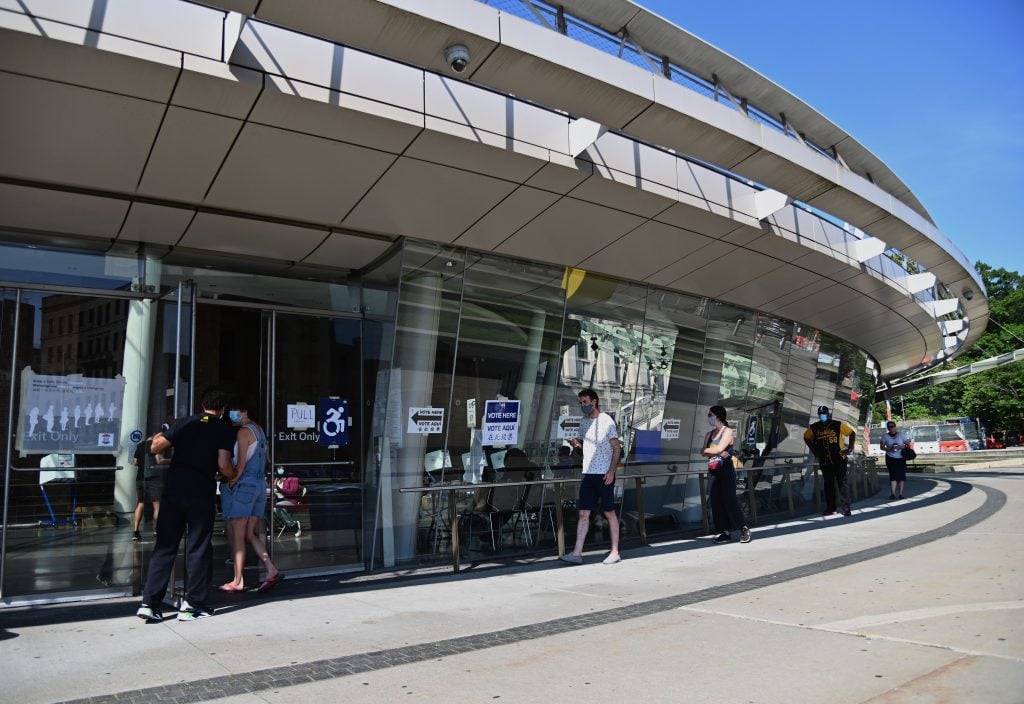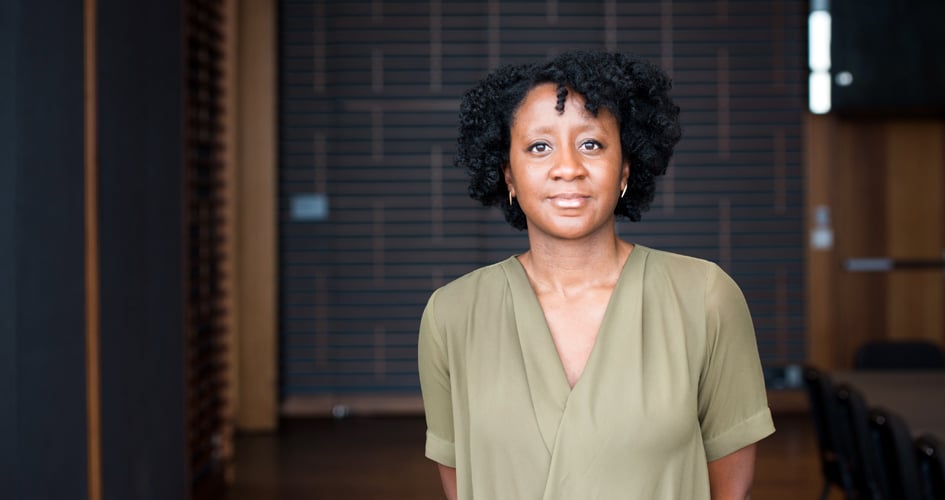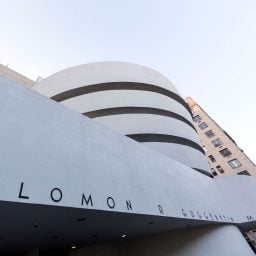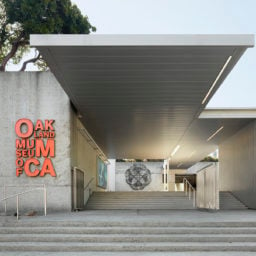If there is one thing that marks our collective experience in the first half of this year, it is the way that our understanding of how care and knowledge function in our society has changed. We have arrived at this point due to the combination of living through an unprecedented global pandemic whose full effects remain unknown, and witnessing (yet again) the known forces of racialized violence in the United States through the brutal murder of George Floyd by a Minneapolis police officer.
These twin events have highlighted the urgent need to cultivate practices of care in our daily lives, from recognizing the indispensable caregiving provided by essential workers (many of whom are from minority communities), to the rousing calls of the Black Lives Matter movement, which asks us (yet again) to care for Black life as any other.
Today’s imperative to attend to the most vulnerable and disenfranchised in society while dismantling white supremacy has unsurprisingly exposed the limited knowledge on these subjects among the public, private enterprises, and civic institutions—including museums. This not knowing—due to lack of information, misinformation, or willful ignorance—seems to underpin the carelessness with which we have thus far tackled systemic racism and structural injustices in our society. We therefore find ourselves in a crucial period of learning.
To this end, as an arts leader and curator who has watched many prominent museums struggle to respond aptly to this seismic societal shift as they wavered between presumed neutrality and tentative solidarity, I offer a series of reflections on the limits of knowledge and care.

People gather around the Robert E. Lee statue on Monument Avenue in Richmond, Virginia, on June 4, 2020. Photo: Ryan M. Kelly / AFP via Getty Images.
1. Museums are built on the ideological foundation of being repositories of knowledge and spaces of care in service of civic society in the western world.
2. The history of museums is tied to the colonial impulse to collect and amass objects (and therefore cultural knowledge) from the world over, charging specialist caretakers and scientists with their interpretation.
3. The conditions of collecting upon which museums were founded are inextricably linked to colonial violence enacted on the other—non-western bodies, spaces, and societies.
4. Museums have obscured this violence in their missions of knowledge formation and caring for objects. Museums have long positioned their values and activities as apolitical acts of civic benevolence without probing their own proximity to power.
5. Care in museums has expanded from a focus on safeguarding things and building western art history in the 19th century to the reification of audience engagement in the 21st century.
6. Museums have always been exclusionary, and for the privileged. They were built for the betterment of the western subject and society at the expense of the other.
7. This is further complicated by the fiction of the emancipatory power of the cultural/art object—museums deem themselves to be spaces of respite away from real politics and societal injustices.
8. Museums have therefore set themselves in a double bind, presuming to be at the service of civic society on the one hand, while setting themselves apart from it on the other hand.
9. If museums amass knowledge and care for things, then we must ask ourselves, in the midst of the social upheavals and global health pandemic of recent days, months, and years, for whom do they do this?
10. The answer is obvious. The statements from museum leaders in recent days starkly reveal this in so far as they have identified the need to better serve communities of color through all aspects of their work all the while educating their (yet to be diverse) boards, staff and audiences on the importance of anti-racism.
11. To acknowledge the limits of your knowing and caretaking is an important step.
12. But before moving forward, it is important to understand that to seek to make amends, repair, reconcile, and build for the future on broken foundations is a difficult and potentially dangerous path.
13. The task of the moment is not to seek to welcome the other and the excluded into these fragile spaces, i.e. filling quotas and exacting hastened inclusion policies without making any other changes to institutional culture or structure. For the violence will only worsen.
14. The task is to commit to practices of knowing and care that critically interrogate the fraught history of museums and their contemporary form, uprooting weak foundations and rebuilding upon new, healthy ones.
15. Let us know and care for the other, ourselves, and society at large in equal measure, without prejudice. Let us know and care about bodies and their politics.

Installation view, “Kader Attia: The Museum of Emotion” at Hayward Gallery, Southbank Centre, London, United Kingdom. Courtesy Lehmann Maupin.
If we have now arrived at acknowledging the genealogy of violence and injustice in our institutions, public spaces, and personal lives, then the hard work of the days and months to come is to unlearn the practices and behaviors that have emerged from this condition, and seek to build anew along antiracist and decolonized lines.
For museums and other cultural institutions, what does this look like in practice? As my final points above suggest, we must go beyond token gestures of diversity and inclusion, and arrive at a fundamental rethinking of the role of museums. Many commentators, countless open letters, and widely distributed petitions have offered thoughts on addressing the numbers—diversifying boards, curatorial teams, and leadership as well as collections and curatorial programming. Others have pointed out the importance of tackling restitution and cultural funding. This is work that is being done by far too few, and it is crucial work that will get us farther than where we are today.
Yet there remains another opportunity. One that involves the decision to view our cultural institutions through a different lens—one that compels museums to relinquish their claims to authority and objectivity, and extend a hand of care to their publics as well as artists and objects.
Museums must practice empathy and close the gap between themselves and their communities; they must provide space for conversations on the issues that matter to the lives of their audiences, neighbors, and employees. Museums must be sites of advocacy, not just for the artistic and art-historical traditions that they hold so dear, but for basic rights to life, safety, shelter, well-being, and economic and intellectual sustenance. Museums must dismantle regimes of power even when that power emanates from within.

Voters stand in line to vote at the Brooklyn Museum polling site during the New York Democratic presidential primary elections on June 23, 2020 in New York City. (Photo by ANGELA WEISS/AFP via Getty Images)
What would our museums be if they were to center community in place of audience? This might mean that museums evolve to serve a constituency with specific needs instead of feeding a generalized mass.
What would our museums be if they directly engaged representatives from this community in their governance? This might mean that the work of museums will not only be informed by the expertise of highly accomplished professionals and high-net-worth individuals, but by everyday citizens such as teachers, healthcare workers, community organizers, and young people.
What would our museums be if they halted (at least for a while) their rampant accumulation of artworks that will never see the light of day? This might mean that our museums use their surplus funds to improve the social, political, and legal status of artists, as well as their own employees.
What would our museums be if they divested from entrenched hierarchies within their collections, programming, and workplace, and invested in a culture of transparency, collaboration and mutual understanding? This might mean our museums become sites of convening where knowledge is unfixed, practices of care evolve with the times, and institutional accountability becomes second nature.

Protestors outside the Whitney Museum in New York City in 2019. (Photo by Andrew Lichtenstein/Corbis via Getty Images)
In short, we cannot just seek to change the individuals and the art histories represented in museums. We have to rethink the entire model and be open to the myriad forms that they might take. This would seem like a far-reaching task—but at a time when many civic institutions are being exposed for negligence of duty, museums must recognize their shortcomings and develop new ways of thinking and doing. For far too long, museums have instrumentalized the radical thinking of artists and other creative practitioners to advance their work. The time is now to decolonize from within.
Yesomi Umolu is director and curator of the Logan Center Exhibitions at the Reva and David Logan Center for the Arts, University of Chicago. She was artistic director of the 2019 Chicago Architecture Biennial.













